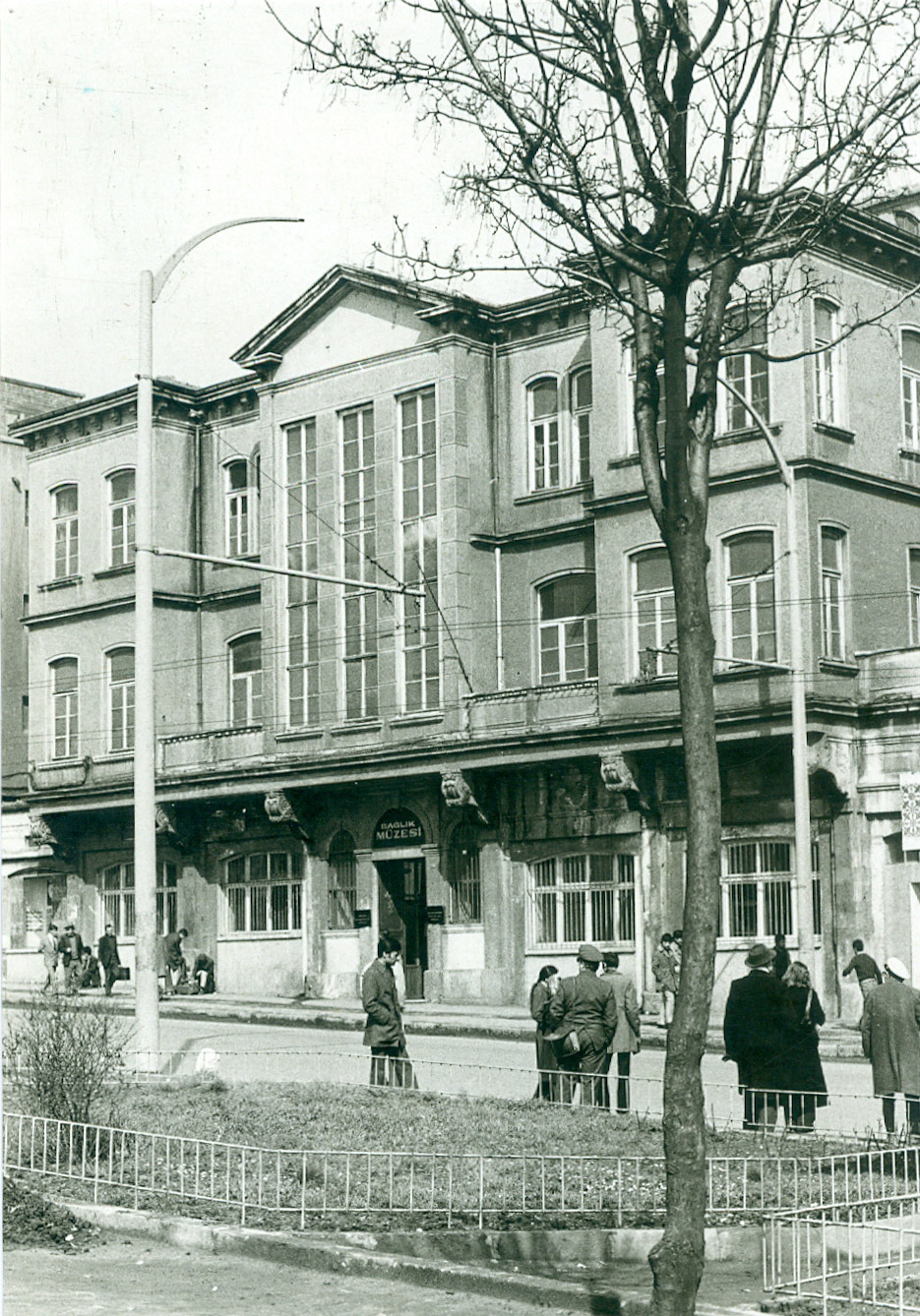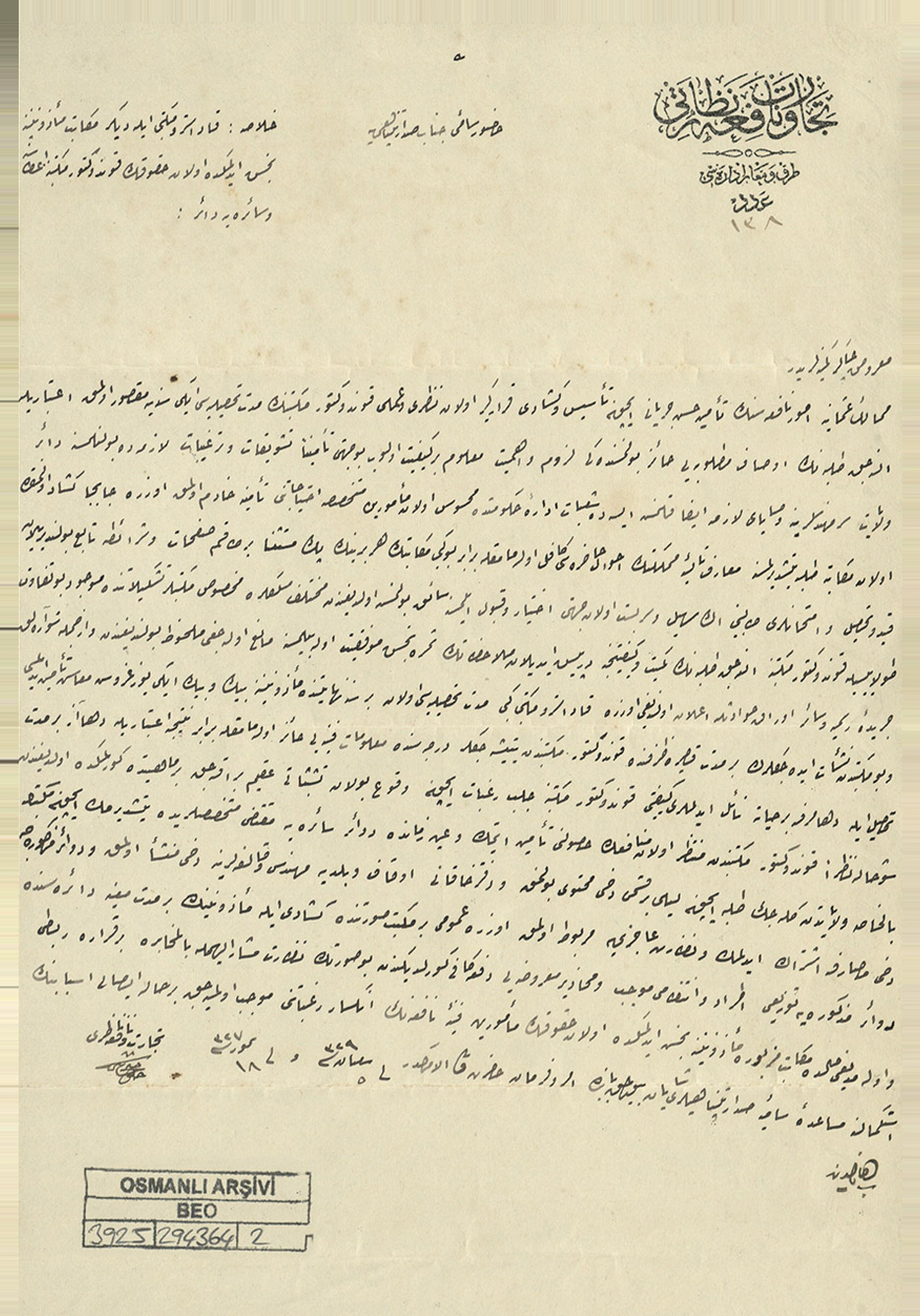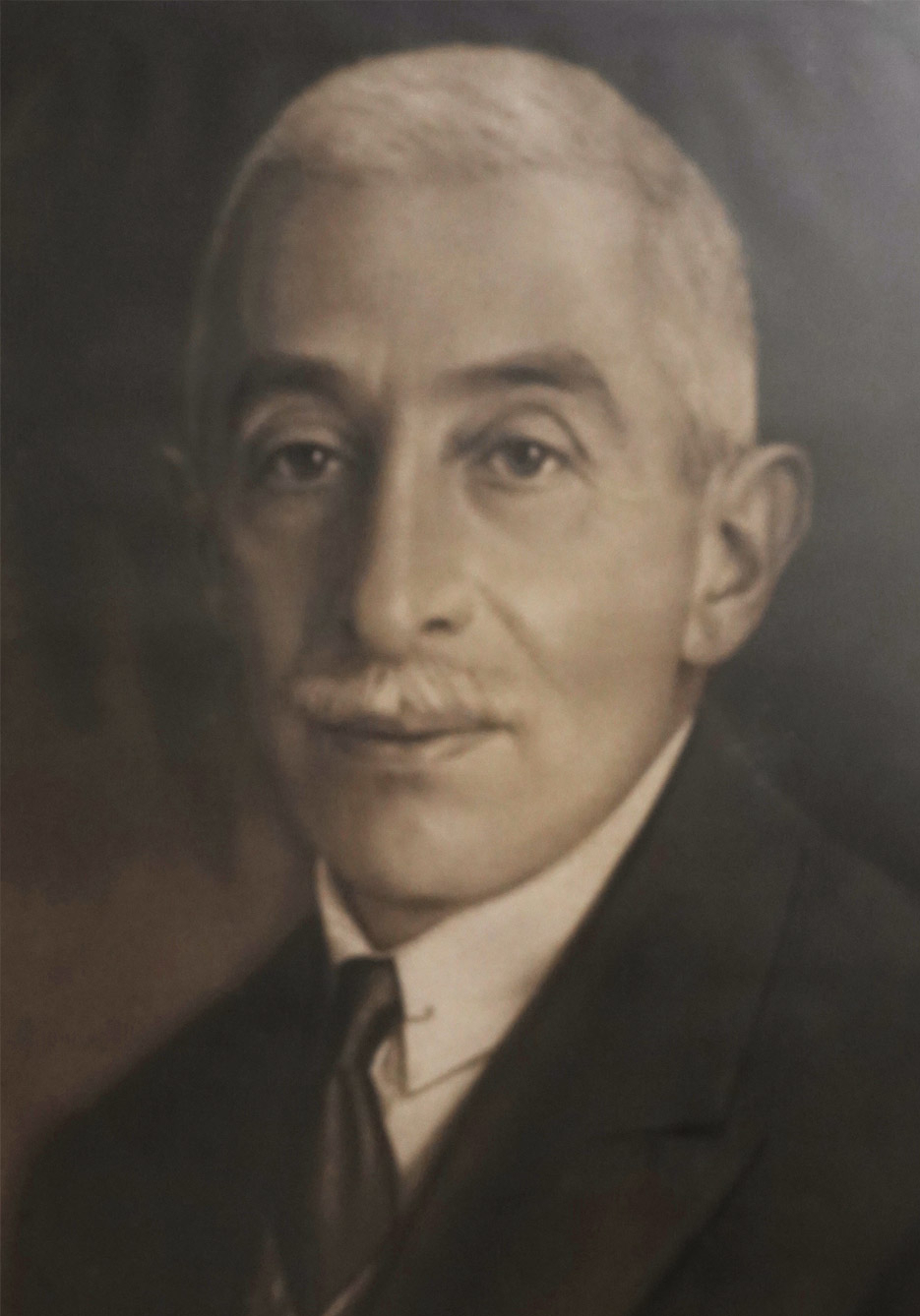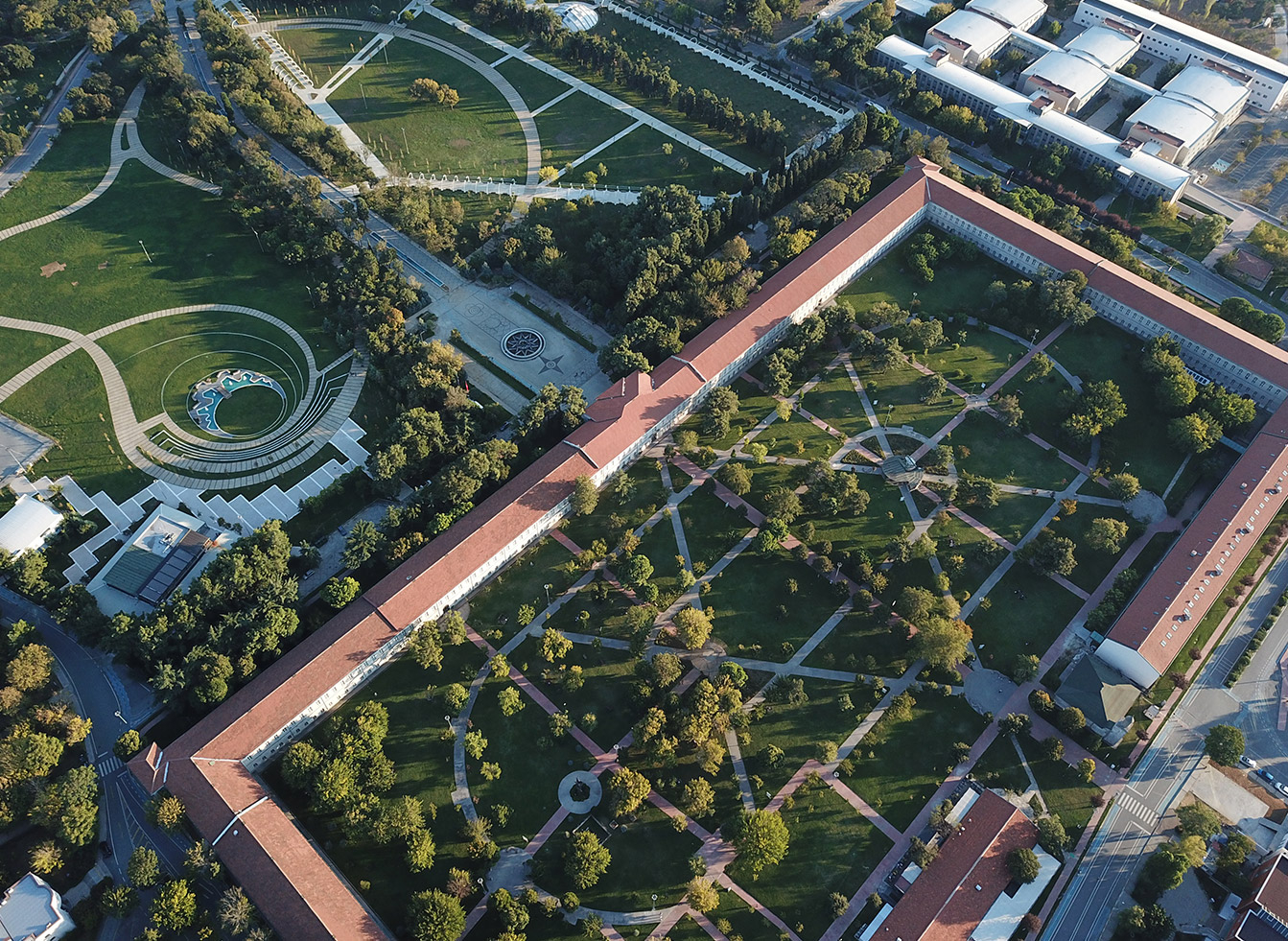
1911-1922
The Conductors (Technicians) School of Higher Education

1923-1936
Public Works Science School

1936-1969
Technical School

1969-1982
Istanbul State Academy of Engineering and Architecture

1982 - 1992
Yıldız University

1992 - ∞
Yıldız Technical University
1911-1922
The Conductors (Technicians) School of Higher Education
The Conductors School was established in order to train technicians who would take part in various public works such as road, railway and bridge construction, the construction of which was accelerated in the Ottoman Empire. The official establishment announcement of the school, which was brought to the agenda in the Parliament on May 11, 1911, was made on July 31, 1911. The Conductors School of Higher Education, which had the status of a college, was limited to two years and education started in September of the same year.
Since there was no time to build a special building, Salih Efendi Mansion, known today as the Health Museum, on Divanyolu was allocated for the school and Hazım Bey, the algebra-mathematics teacher, was appointed as the first principal. Due to the Tripoli War, which started a few weeks after the school was opened, only 14 students could graduate from two branches of 40 each in 1913. The institution, which witnessed the Balkan Wars and the First World War, and then the occupation of Istanbul, continued its education without interruption, although it had to change places frequently.
İbrahim Selahattin Bey, who became the head of the institution in 1913, conducted many courses in the program alone, as he had difficulty in finding a teacher during the war and occupation years. Sending many of its students to the front until 1923, 66 students were able to graduate as technicians and most of these students took part in the public works projects carried out in Anatolia.



1923-1936
Public Works Science School
In the autumn of 1923, shortly before the proclamation of the Republic, the Conductors School was moved to a wing of the barracks in Gümüşsuyu, where the Engineering School was located, and the name of the institution was changed into Public Works Science School. The following year, free boarding education was started, and students from all over the country were accepted. As a result of the arrangements made in the curriculum, the duration of education was extended by six months, the duration of the school was increased to two and a half years, and science officer diplomas began to be awarded to graduates.
Bedriye Hanım graduated from Public Works Science School in 1930 and became the first female science officer of both the school and the young republic. The following year, Ankara-based Public Works Science School Alumni Association was established. That year, when İbrahim Selahattin Bey left the directorate due to health reasons, Cevdet Erdemi was appointed instead. Another month was added to the study period and the program was extended to three years. Thus, it was aimed to make science officers more qualified.
In 1935, road engineer Atıf Tansuğ became the principal. With a decision taken in the summer of the same year, the school was moved from Gümüşsuyu to Memduh Pasha Mansion in Kuruçeşme. However, with the initiatives of the Minister of Public Works Ali Çetinkaya, the existing school program was changed once again and the education program was changed with the additional law number 3074 dated 4 December 1936. Thus, Public Works Science School started to implement both a two-year technician and a four-year engineering program. The name of the school was changed into Technical School.



1936-1969
Technical School
The Technical School, which started to train both technicians and engineers with two different types of education in 1936, settled in the buildings allocated in the Yıldız Palace complex in the spring of 1937 due to the increasing student population. On November 11, 1937, the regulation of the school was accepted with the signature of President Mustafa Kemal Atatürk.
While the wooden mansions in Yıldız Palace were used as classrooms and libraries, Çukursaray was organized as hostels. The building known as the Damatlar Office, on the other hand, was rebuilt in accordance with the plans prepared by the architect Emin Onat, preserving the outer body walls, and was opened to the Construction and Machinery branches in the fall of 1939.
The first yearbook of the school, which was attached to the Ministry of Education in 1941, was prepared for 1942-43 graduates and the diploma numbers were continued from where Public Works Science School left off, ensuring the preservation of institutional integrity. In addition to innovations such as organizing the first technical trip to Anatolia, adding the diploma project course to the program, the opening of Architecture and Electricity branches under the Engineering unit, the establishment of the first Map and Cadastre Branch in the country and the first Evening Technical School were also realized under the roof of the Technical School.
In the fall of 1951, the two-year technician branches were closed. In the fall of 1959, the new teaching building was opened for use. In the same year, graduate programs began to accept students and the institution was called Istanbul Yıldız Technical School so that it did not interfere with other technical schools opened throughout the country.
While Atıf Tansuğ, one of the school's symbolic principals, worked for 25 years, including one year at Public Works Science School, Prof. Adnan Ergeneli, the engineer, who was elected for the first time in 1963, on the other hand, played a major role in the Technical School's gaining the "Academy" status. With the law numbered 1184 dated June 3, 1969, Istanbul State Engineering and Architecture Academy was established and the period of Technical School came to an end.



1969-1982
Istanbul State Academy of Engineering and Architecture
Istanbul Yıldız Technical School acquired a new status and structure with the law no. 1184 published in the Official Gazette on 3 June 1969 and the name of the institution was changed to Istanbul State Academy of Engineering and Architecture. Thus, branch administrations were transformed into a chair structure; the teaching staff within the Technical School were ranked as assistant, instructor, doctor, associate professor, and professor according to their academic education levels. After this change, which was made with the aim of contributing to engineering science as well as providing engineering education, 40 chairs were established within ISAEA under the Departments of Electrical Engineering, Mapping and Cadastre, Civil Engineering, Mechanical Engineering and Architecture.
Each chair was headed by at least one professor. Prof. Nuriye Pınar Erdem took office as the first female chair of both the Chair of Geology and ISAEA. In those years, when the student movement was influential all over the world, student boycotts and various conflicts based on political views took place at ISAEA, and the management of the institution changed three times in 1970 alone.
Finally, Vakkas Aykurt, who had been the director of the Technical School for a period, was persuaded to take office as the president and the school stabilised for a while. Subsequently, in 1971, when the private engineering schools in Istanbul were nationalised, Vatan Engineering, Işık Engineering, Kadıköy Engineering, Galatasaray Engineering, Istanbul Chemistry High School, and Cağaloğlu Engineering schools were affiliated to ISAEA. A 4-fold increase of 5100 students in daytime programmes and a 5-fold increase of 8000 students in evening programmes were enrolled in ISAEA.
In 1973, the Department of Basic Sciences, consisting of Mathematics and Physics branches, was opened. Prof. Muzaffer Sağışman became the president of the Academy, and the laboratories were renovated in line with the increasing number of students. Similar works continued under the presidency of Prof. Süha Toner, an architect who became president in 1977, and a conference hall and sports fields were added. In 1982, with the compulsory changes made within the scope of the Higher Education Law, it was decided to restructure all academies as universities, and thus ISAEA was renamed Yıldız University.


1982-1992
Yıldız University
After the 12 September 1980 military coup, the Higher Education Law was enacted and all academies across the country were converted into universities. Thus, Istanbul State Academy of Engineering and Architecture was renamed Yıldız University in accordance with the law numbered 2809 and dated 30 March 1983.
While Prof. Süha Toner, the last president of ISAEA, was appointed as rector, ISAEA's own departments and the departments transferred from private engineering high schools were gathered under the name of Faculty of Engineering in general, and the architecture departments under the name of Faculty of Architecture. In addition, Kocaeli State Academy of Engineering and Architecture was transformed into a faculty and incorporated into Yıldız University. Master's degree programs, which had been continuing since 1959, were grouped under two separate titles, namely the Institute of Social Sciences and the Institute of Science, and the Faculty of Arts and Science was established under the Rectorate. After a while, the School of Foreign Languages, the Departments of History of Atatürk's Principles and Revolutions, Physical Education and Fine Arts were added to the Rectorate.
The Faculty of Arts and Science was housed in the building in Şişli and the Physical Education Department was housed in the building in Ayazağa, the structures used by the institutions within ISAEA in the process of nationalisation of private engineering schools. In line with changing technological issues, Yıldız University started the departments of Computer Engineering, Naval Architecture Engineering, Industrial Engineering, Electronics and Communications Engineering and a Vocational High School.
With the support of the Sabancı Family, it was decided to build a nursery and library for the children of the staff on Yıldız Campus. During this period, Prof. Süha Toner was elected rector for the second time, and cultural and artistic activities such as the opening of the first Museum Studies Master's programme in Turkey and the establishment of Yüksel Sabancı Centre of Culture and Art on the campus attracted attention.
It was also during the period of Yıldız University that the Yıldız Foundation and the alumni office in Maryland in the USA, which aimed to bring together alumni from abroad, were established.



1992-∞
Yıldız Technical University
Some other structural changes were introduced with the law no. 3837 dated 03 July 1992, and Yıldız University was renamed Yıldız Technical University. While Kocaeli Vocational High School and Kocaeli Faculty of Engineering were separated from the institution, the remaining Faculty of Engineering in Yıldız, which consisted of 12 departments, was abolished and the existing departments were merged to form four new faculties: Faculty of Electrical & Electronics, Faculty of Civil Engineering, Faculty of Mechanical Engineering and Faculty of Chemical & Metallurgical Engineering. While the Faculty of Arts & Science and the Faculty of Architecture retained their positions, the Faculty of Economics and Administrative Sciences was added to the institution as a brand-new faculty. Thus, Yıldız Technical University gained a new structure consisting of 7 faculties, 3 institutes, a school of vocational studies and departments affiliated to the Rectorate.
One month after the retirement of Rector Prof. Süha Toner in July 1992, the decision to establish Yıldız Technical University was approved and Prof. Turgut Uzel, Dean of the Faculty of Engineering, became the first rector of YTU. After four years of service, Prof. Ayhan Alkış was elected rector for two consecutive terms. After Prof. Durul Ören served as rector between 2004-2008 and Prof. İsmail Yüksek served as rector for two consecutive terms between 2008-2016, Prof. Bahri Şahin took office in the 2016-2020 period. In 2020, Prof. Tamer Yılmaz was appointed as rector.
Since 2020, Yıldız Technical University has been setting new goals by introducing the initiatives required by the 21st century and rapidly implementing the relevant projects. To illustrate, as the first university in Turkey to receive the Zero Waste Certificate, Yıldız Technical University attracts attention with its projects like Barrier-Free University, Sustainable Campus, and Smart Campus, as well as its activities for the use of clean water and clean energy.
Improving its reputation in the national and international arena with achievements measured at world standards, YTU supports students with scholarship opportunities and academicians with publication incentive policies and continues its encouraging and facilitating attitude without any concessions in order to diversify the types of projects in the Scientific Research Projects Coordination Office and to improve the quality and quantity of thesis studies carried out in the Institutes.
In December 2021, the Council of Higher Education declared Yıldız Technical University as the fifth best research university in Turkey in the A1 group in the list of Research Universities. Yıldız Technical University, with its Technopark established in 2003, has also won the most successful Technopark award in the last two years.
In 2024, Prof. Dr. Eyüp Debik was appointed as the Rector of Yıldız Technical University.

